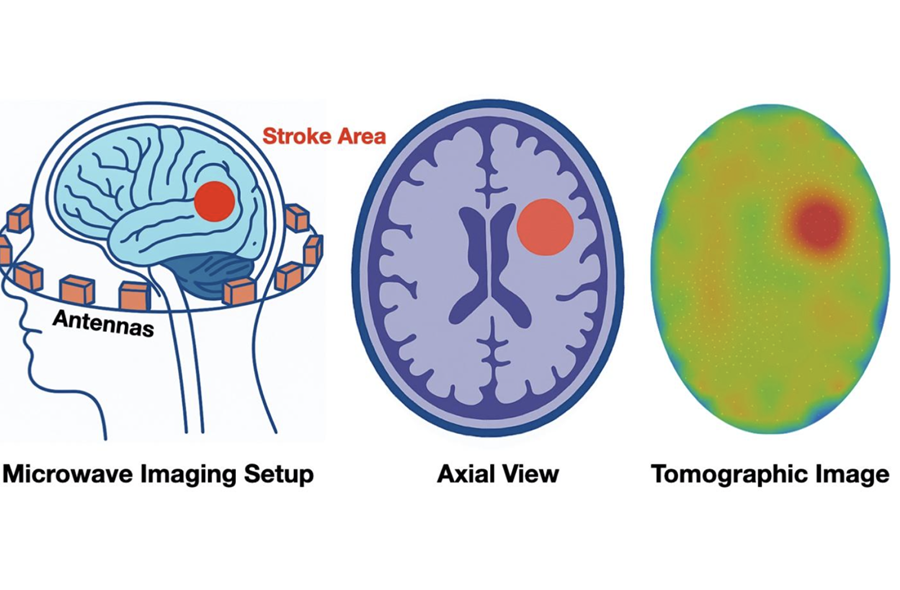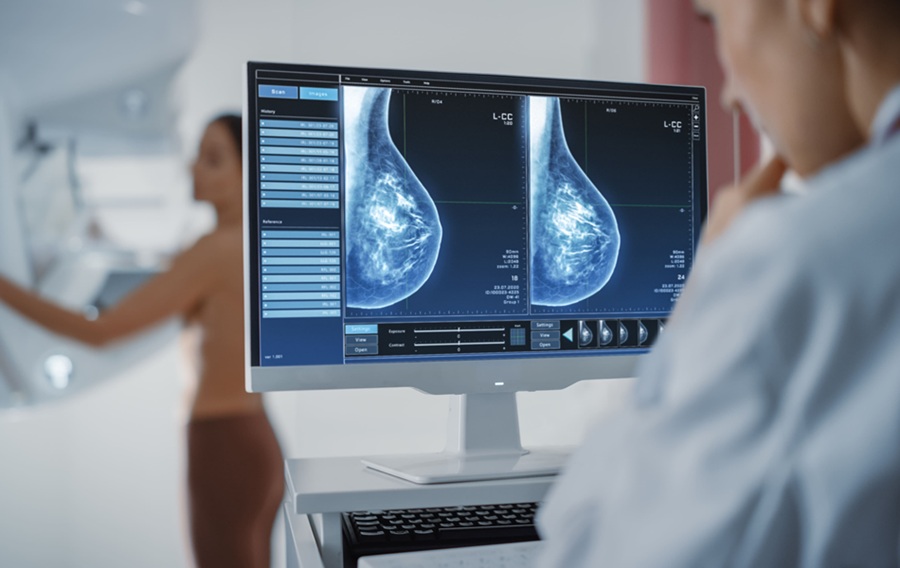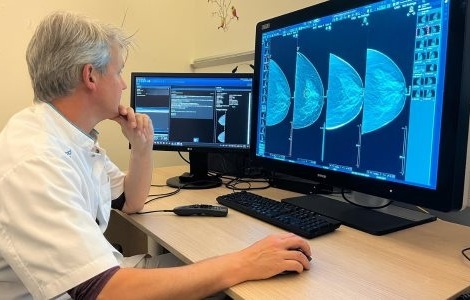Imaging Clinical Information System Transfer Expands Medical Imaging Sharing, Collaboration Across Healthcare Information Exchanges
|
By MedImaging International staff writers Posted on 12 Feb 2014 |

Image: Enhancements to the ICIS platform with “single sign-on, single view” capabilities and seamless image sharing across Healthcare Information Exchanges and Accountable Care Organizations will be shown at HIMSS 2014 (Photo courtesy of Agfa HealthCare).
A new “single sign-on, single view” format on an imaging clinical information system (ICIS) enables clinicians to rapidly and easily see pertinent images from any workstation or device.
The support of non-Digital Imaging and Communications in Medicine (DICOM) and DICOM data formats with this system facilitates storage and access of medical imaging information, multimedia information, and paper documents in one complete platform.
During HIMSS 2014, which will be held on February 23-27, 2014 in Orlando (FL, USA), Agfa HealthCare (Mortsel, Belgium) will present several enhancements to its enterprise ICIS, that utilize information technology (IT) applications to optimize collaboration among clinicians within a hospital and promote greater operational efficiencies and cost savings throughout an entire health system. As the “gold standard” for image-enabling the electronic health record (EHR), ICIS merges patient records by integrating and linking multifacility, multidepartmental, and multispecialty imaging data, providing the ability to capture, store, access and exchange images generated by a health system.
“Medical images, such as CT scans, X-rays, MRIs, and ultrasounds, as well as digital images of wounds, surgery, ophthalmology and dermatology, have become essential elements to the patient care continuum, often determining how a patient is treated and when additional intervention is required. Yet, in many hospitals and health systems, medical images are not accessible via a patient’s electronic health record and are often ‘siloed’ within the department in which they were generated,” said Michael Green, president, Agfa HealthCare Americas Region. “Agfa HealthCare is developing ICIS to meet this challenge head-on and to advance what we see as a rapidly advancing ‘visual healthcare evolution.’ By embracing cross-department and enterprise access to medical images, hospitals and health systems have the opportunity to enhance overall patient care, improve procedure and cost efficiencies, and advance meaningful use of the EHR.”
During HIMSS 2014, Agfa HealthCare will present its vision for furthering universal image and data sharing throughout the health enterprise. Among its initiatives at the event, Agfa HealthCare will be launching several enhancements to the ICIS platform, including ICIS Transfer, which further empowers image sharing across healthcare information exchanges (HIEs) and Accountable Care Organizations (ACOs), and the new single sign-on, single view format.
“Seamless access to medical images can have a significant impact in the care a patient receives and his or her ongoing treatment, while enabling hospitals to deliver optimal, efficient and cost-effective services,” stated James Jay, vice president, imaging IT Solutions, Agfa HealthCare. “As ICIS becomes the ‘gold standard’ for enterprise medical imaging, Agfa HealthCare is continually identifying opportunities to enhance the productivity of the platform by always keeping an eye towards the clinician and the hospital IT infrastructure. The enhancements we are unveiling at HIMSS 2014 were developed as part of this broader vision.”
Related Links:
Agfa HealthCare
The support of non-Digital Imaging and Communications in Medicine (DICOM) and DICOM data formats with this system facilitates storage and access of medical imaging information, multimedia information, and paper documents in one complete platform.
During HIMSS 2014, which will be held on February 23-27, 2014 in Orlando (FL, USA), Agfa HealthCare (Mortsel, Belgium) will present several enhancements to its enterprise ICIS, that utilize information technology (IT) applications to optimize collaboration among clinicians within a hospital and promote greater operational efficiencies and cost savings throughout an entire health system. As the “gold standard” for image-enabling the electronic health record (EHR), ICIS merges patient records by integrating and linking multifacility, multidepartmental, and multispecialty imaging data, providing the ability to capture, store, access and exchange images generated by a health system.
“Medical images, such as CT scans, X-rays, MRIs, and ultrasounds, as well as digital images of wounds, surgery, ophthalmology and dermatology, have become essential elements to the patient care continuum, often determining how a patient is treated and when additional intervention is required. Yet, in many hospitals and health systems, medical images are not accessible via a patient’s electronic health record and are often ‘siloed’ within the department in which they were generated,” said Michael Green, president, Agfa HealthCare Americas Region. “Agfa HealthCare is developing ICIS to meet this challenge head-on and to advance what we see as a rapidly advancing ‘visual healthcare evolution.’ By embracing cross-department and enterprise access to medical images, hospitals and health systems have the opportunity to enhance overall patient care, improve procedure and cost efficiencies, and advance meaningful use of the EHR.”
During HIMSS 2014, Agfa HealthCare will present its vision for furthering universal image and data sharing throughout the health enterprise. Among its initiatives at the event, Agfa HealthCare will be launching several enhancements to the ICIS platform, including ICIS Transfer, which further empowers image sharing across healthcare information exchanges (HIEs) and Accountable Care Organizations (ACOs), and the new single sign-on, single view format.
“Seamless access to medical images can have a significant impact in the care a patient receives and his or her ongoing treatment, while enabling hospitals to deliver optimal, efficient and cost-effective services,” stated James Jay, vice president, imaging IT Solutions, Agfa HealthCare. “As ICIS becomes the ‘gold standard’ for enterprise medical imaging, Agfa HealthCare is continually identifying opportunities to enhance the productivity of the platform by always keeping an eye towards the clinician and the hospital IT infrastructure. The enhancements we are unveiling at HIMSS 2014 were developed as part of this broader vision.”
Related Links:
Agfa HealthCare
Latest Imaging IT News
- New Google Cloud Medical Imaging Suite Makes Imaging Healthcare Data More Accessible
- Global AI in Medical Diagnostics Market to Be Driven by Demand for Image Recognition in Radiology
- AI-Based Mammography Triage Software Helps Dramatically Improve Interpretation Process
- Artificial Intelligence (AI) Program Accurately Predicts Lung Cancer Risk from CT Images
- Image Management Platform Streamlines Treatment Plans
- AI-Based Technology for Ultrasound Image Analysis Receives FDA Approval
- AI Technology for Detecting Breast Cancer Receives CE Mark Approval
- Digital Pathology Software Improves Workflow Efficiency
- Patient-Centric Portal Facilitates Direct Imaging Access
- New Workstation Supports Customer-Driven Imaging Workflow
Channels
Radiography
view channel
X-Ray Breakthrough Captures Three Image-Contrast Types in Single Shot
Detecting early-stage cancer or subtle changes deep inside tissues has long challenged conventional X-ray systems, which rely only on how structures absorb radiation. This limitation keeps many microstructural... Read more
AI Generates Future Knee X-Rays to Predict Osteoarthritis Progression Risk
Osteoarthritis, a degenerative joint disease affecting over 500 million people worldwide, is the leading cause of disability among older adults. Current diagnostic tools allow doctors to assess damage... Read moreMRI
view channel
Novel Imaging Approach to Improve Treatment for Spinal Cord Injuries
Vascular dysfunction in the spinal cord contributes to multiple neurological conditions, including traumatic injuries and degenerative cervical myelopathy, where reduced blood flow can lead to progressive... Read more
AI-Assisted Model Enhances MRI Heart Scans
A cardiac MRI can reveal critical information about the heart’s function and any abnormalities, but traditional scans take 30 to 90 minutes and often suffer from poor image quality due to patient movement.... Read more
AI Model Outperforms Doctors at Identifying Patients Most At-Risk of Cardiac Arrest
Hypertrophic cardiomyopathy is one of the most common inherited heart conditions and a leading cause of sudden cardiac death in young individuals and athletes. While many patients live normal lives, some... Read moreUltrasound
view channel
Wearable Ultrasound Imaging System to Enable Real-Time Disease Monitoring
Chronic conditions such as hypertension and heart failure require close monitoring, yet today’s ultrasound imaging is largely confined to hospitals and short, episodic scans. This reactive model limits... Read more
Ultrasound Technique Visualizes Deep Blood Vessels in 3D Without Contrast Agents
Producing clear 3D images of deep blood vessels has long been difficult without relying on contrast agents, CT scans, or MRI. Standard ultrasound typically provides only 2D cross-sections, limiting clinicians’... Read moreNuclear Medicine
view channel
PET Imaging of Inflammation Predicts Recovery and Guides Therapy After Heart Attack
Acute myocardial infarction can trigger lasting heart damage, yet clinicians still lack reliable tools to identify which patients will regain function and which may develop heart failure.... Read more
Radiotheranostic Approach Detects, Kills and Reprograms Aggressive Cancers
Aggressive cancers such as osteosarcoma and glioblastoma often resist standard therapies, thrive in hostile tumor environments, and recur despite surgery, radiation, or chemotherapy. These tumors also... Read more
New Imaging Solution Improves Survival for Patients with Recurring Prostate Cancer
Detecting recurrent prostate cancer remains one of the most difficult challenges in oncology, as standard imaging methods such as bone scans and CT scans often fail to accurately locate small or early-stage tumors.... Read moreGeneral/Advanced Imaging
view channel
New Algorithm Dramatically Speeds Up Stroke Detection Scans
When patients arrive at emergency rooms with stroke symptoms, clinicians must rapidly determine whether the cause is a blood clot or a brain bleed, as treatment decisions depend on this distinction.... Read more
3D Scanning Approach Enables Ultra-Precise Brain Surgery
Precise navigation is critical in neurosurgery, yet even small alignment errors can affect outcomes when operating deep within the brain. A new 3D surface-scanning approach now provides a radiation-free... Read moreIndustry News
view channel
GE HealthCare and NVIDIA Collaboration to Reimagine Diagnostic Imaging
GE HealthCare (Chicago, IL, USA) has entered into a collaboration with NVIDIA (Santa Clara, CA, USA), expanding the existing relationship between the two companies to focus on pioneering innovation in... Read more
Patient-Specific 3D-Printed Phantoms Transform CT Imaging
New research has highlighted how anatomically precise, patient-specific 3D-printed phantoms are proving to be scalable, cost-effective, and efficient tools in the development of new CT scan algorithms... Read more
Siemens and Sectra Collaborate on Enhancing Radiology Workflows
Siemens Healthineers (Forchheim, Germany) and Sectra (Linköping, Sweden) have entered into a collaboration aimed at enhancing radiologists' diagnostic capabilities and, in turn, improving patient care... Read more



















